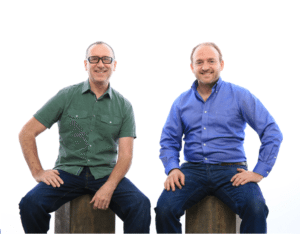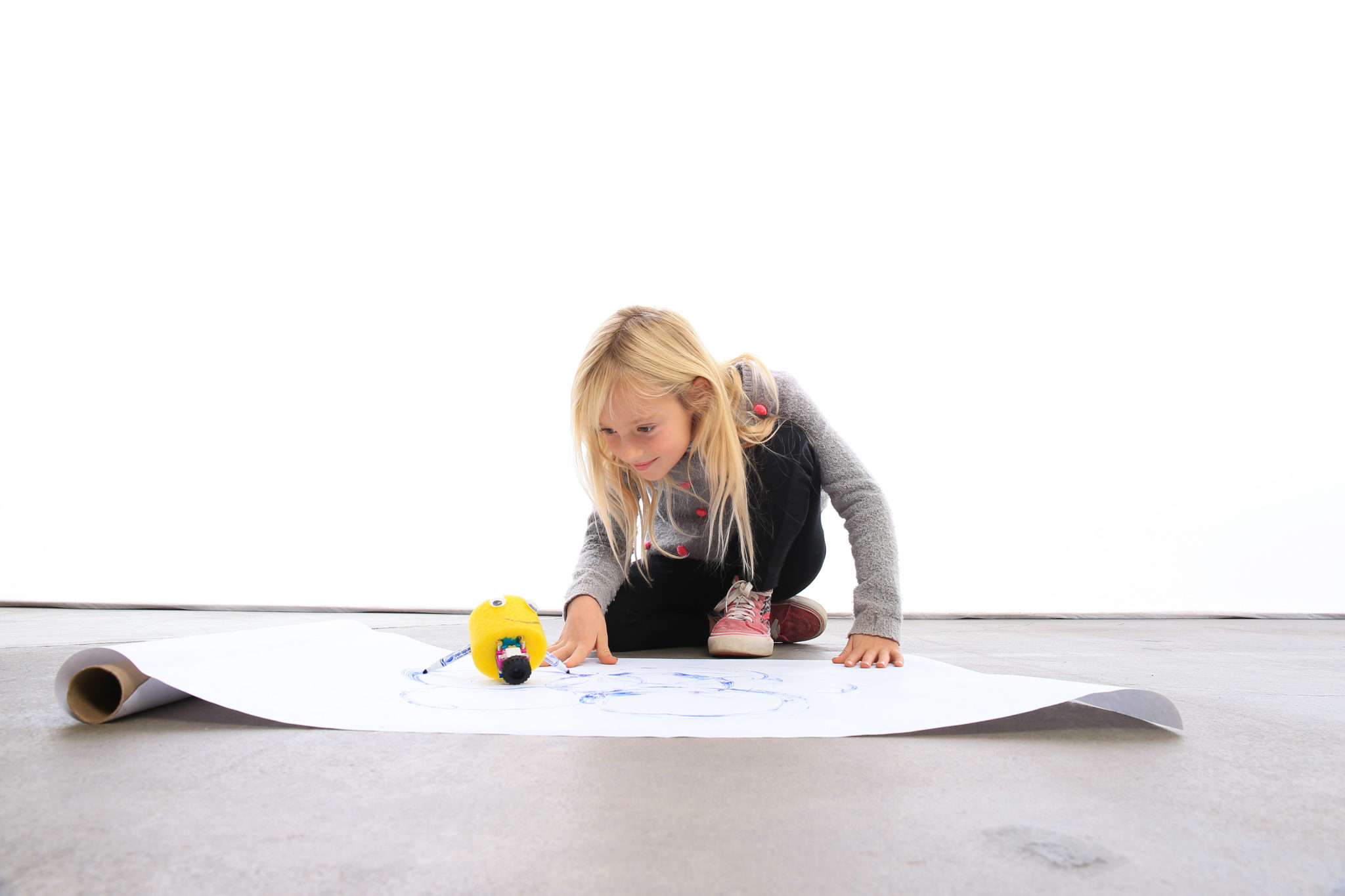By David Templeton
Mill Valley resident Nate MacDonald is a born “maker.”
A co-founder of Sonoma State University’s pioneering Maker Certificate Program, MacDonald was instrumental in the growth of the popular White Hill Robotics Club, and later a maker elective program, while serving as a teacher at White Hill Middle School, in Fairfax. It was during this tenure as a teacher that MacDonald began to recognize that toys and other “educational products” claiming to introduce children to concepts of science, electronics, engineering and physics, usually failed to do more than teach kids how to connect tab A to tab B.
His recognition of this problem was eventually shared by John Schuster, who was then working as the IT director at White Hill Middle School. Together, the two founded Tenka Labs, a company formed with the intention of exploring new and better ways to teach the basics of circuitry and electronics to an increasingly savvy generation of kids. A Japanese word translated as “ignite,” Tenka is the perfect name for MacDonald’s new enterprise, which now stands on the verge of unveiling its first line of toys.
MacDonald and Schuster are more than eager to ignite the imaginations of thousands of students and kids around the world, possibly giving the “makers” of the future the literal building blocks they will need to create whatever technological innovations the future might demand.
Templeton: I understand that your first product, Circuit Cubes, is still being considered “top secret.” So what can you tell us about this toy—and is “toy” even the right word for a product designed to inspire the engineers of the future?
MacDonald: Good questions. At this point, we’re not talking a lot about our first product, which will, yes, be called Circuit Cubes. We will officially go public with it after a big toy fair in early 2017. We’ll be officially launching the product then. If we described it in detail, people would want to go out and buy it, and since it’s not officially on the market yet, they’d be disappointed.
Disappointment is not the response we want, so we’re waiting to say anything too specific.
What I can talk about is Tenka Labs itself, and how a couple of educators quit their jobs teaching to start a company making educational toys.
Templeton: OK, then. Tell me what you can. And please don’t say, “I could tell you, but then I’d have to kill you.”
MacDonald: I won’t, and I can tell you a lot. John and I created this company about a year-and-a-half ago. I’ve been a teacher in Marin for the last 10 years, teaching engineering and other things. While I was teaching at White Hill, I noticed that there weren’t any products that taught kids basic technology literacy and circuitry. A lot of the products out there are good at showing, but aren’t a lot of fun for kids to build with. Or they’re fun, but aren’t really very successful at teaching kids anything useful.
Over the last 15 years of teaching, I’ve learned kids don’t want to be told about technology literacy. They don’t want to do worksheets on electronics. They want to jump in and start building things. They want to skip right to the projects and learn by doing.
In developing Tenka Labs, we’ve always been focused on kids having fun. But while having fun, they are also inspired to learn.
Templeton: So, do you see Tenka Labs as a toy company, or an educational products company?
MacDonald: Both. We are an educational toy company. We are focused on making toys that are fun to play with and build with, but that along the way, enable kids to learn about basic circuitry. Parents are always being told that some new toy is “educational,” that it teaches science or technology, but a lot of them are a lot more “toy” than “teach.”
Templeton: I’ve heard it said that you believe most other “electronic toys” are better at teaching kids to connect the same color together, than they are at teaching kids something useful about how electricity works, and what circuitry actually is.
MacDonald: Yeah. One of our big competitors, littleBits, helps kids make complex circuitry, but it doesn’t actually teach them how a motor works, or how circuitry works. They are not transparent in showing how things happen.
We want kids to understand how the electrical connection between two blocks works, rather than just have a complicated plug that always works when you connect it, and is kind of magical and mysterious. What we want to do is take the magic out of science, but not take the fun out of it.
Because that’s the other problem. A lot of toys that are designed to actually teach, aren’t really that much fun to play with.
Templeton: So what was it you observed that made you decide that kids needed better science toys?
MacDonald: I started out as a math and science teacher. I quickly realized that while kids do have the capacity to learn detailed concepts, you have to engage them first. What they want to do is design and problem-solve and create actual projects. It’s more about what they’re making than the concepts behind why they work, which they learn as a consequence of building the thing itself.
Templeton: It’s the difference between teaching a kid how to diagram a sentence or a poem, as opposed to just having them write a poem, and then showing them how it was structured afterwards?
MacDonald: Basically, yeah. For me, I want kids to be internalizing the basic concepts while they are having fun creating these elaborate projects, whether they are making a flashlight, or a racecar or a tram that goes from one building to another. No kid says, “I want to learn the science of robotics and the electronics that make it possible.” They say, “I want to build a BattleBot!”
That’s what Tenka Labs is all about. Bringing kids the projects that excite them, during the building of which they learn the key concepts that they will need to make even more complex and innovative inventions. When kids are having fun, when they are inventing and creating and testing and discovering, that’s when they are

at their maximum learning curve. It’s a sense of fun that is the scaffolding around which they develop the skills they need, skills required to leverage the knowledge they are picking up, knowledge that will allow them to start designing and building things on their own.
Trust me, if you ask a kid if they want to learn circuitry, they will probably not say, ‘Yes!’ But if you ask 100 kids if they want to learn how to build a robot, or make their LEGO monster crawl across the floor, every one of them will say, “When do we start?”
Templeton: So what’s the lesson here for educators?
MacDonald: That’s easy, and most educators know this. To engage kids, you have to get them interested in the project itself, instead of focusing on what it is they are actually learning. You have to get them excited. Once you’ve gotten them committed, then you can weave in the learning part of it.
Templeton: So, you are a teacher, who’s quit teaching, in order to teach? How’s that working out?
MacDonald: Well, after I decided this was the course I wanted to take, I continued teaching for about a year, experimenting with different ideas and inventions, trying to figure out what was working the best, what kids are the most excited about.
Eventually, it became clear that I was going to have to focus my attention to Tenka Labs full-time. That’s when I permanently resigned from teaching in the classroom. Now I’m trying to address education on a much broader and larger scale.
Templeton: So, you basically quit your original career to sit around making toys and having fun? Can I have your job?
MacDonald: I do get to sit around making toys. And that is fun. But then there’s the business part of it, which believe me, is nothing but work. I’ve made a couple of trips to Taiwan, where we’re going to manufacture the product. I’ve spent a lot of time fundraising, working on marketing, making sure we are properly addressing the educational side of our product. And building our marketing and development team.
Templeton: How many employees does Tenka Labs have?
MacDonald: We have four full-time employees, and about 25 consultants working on various projects.
Templeton: How have you been funding this product development?
MacDonald: Family and friends, mostly. We’ve raised $500,000 through family and friends, and now we are finally going out to others, to hopefully raise another million-and-a-half to fully launch the product.
Templeton: So, you DO have an actual product?
MacDonald: Oh yeah. We’ve been working with a team of students to create a vast array of projects, right here in Marin County. One student is actually the designer of our Bluetooth module so Tenka Labs products can be controlled from their smartphones.
Templeton: Sounds very cool. So, what can I say to explain why we are talking “around” this new toy, instead of actually telling people what it is, what it looks like or what it actually does?
MacDonald: [Laughing] Say that Tenka Labs is currently still in “stealth mode,” that we are working hard to hide the true nature of our competitors until it hits the market. The main thing is, we don’t want to show people what the first line of products looks like, until they can actually go out and place an order.
Templeton: Fair enough. So, as someone now interested in placing an order himself, when will THAT be?
MacDonald: We’ll be unveiling it at the Consumer Electronics Showcase, in Las Vegas, in early January. And we plan to start taking pre-orders during that event.
Templeton: So, people will be able to find out what this actually is, when?
MacDonald: Soon. Very, very soon.
Tenka Labs; 461 Coloma Street, Sausalito; 415/729-9895; Tenkalabs.com will have more information following the unveiling of the new product.








